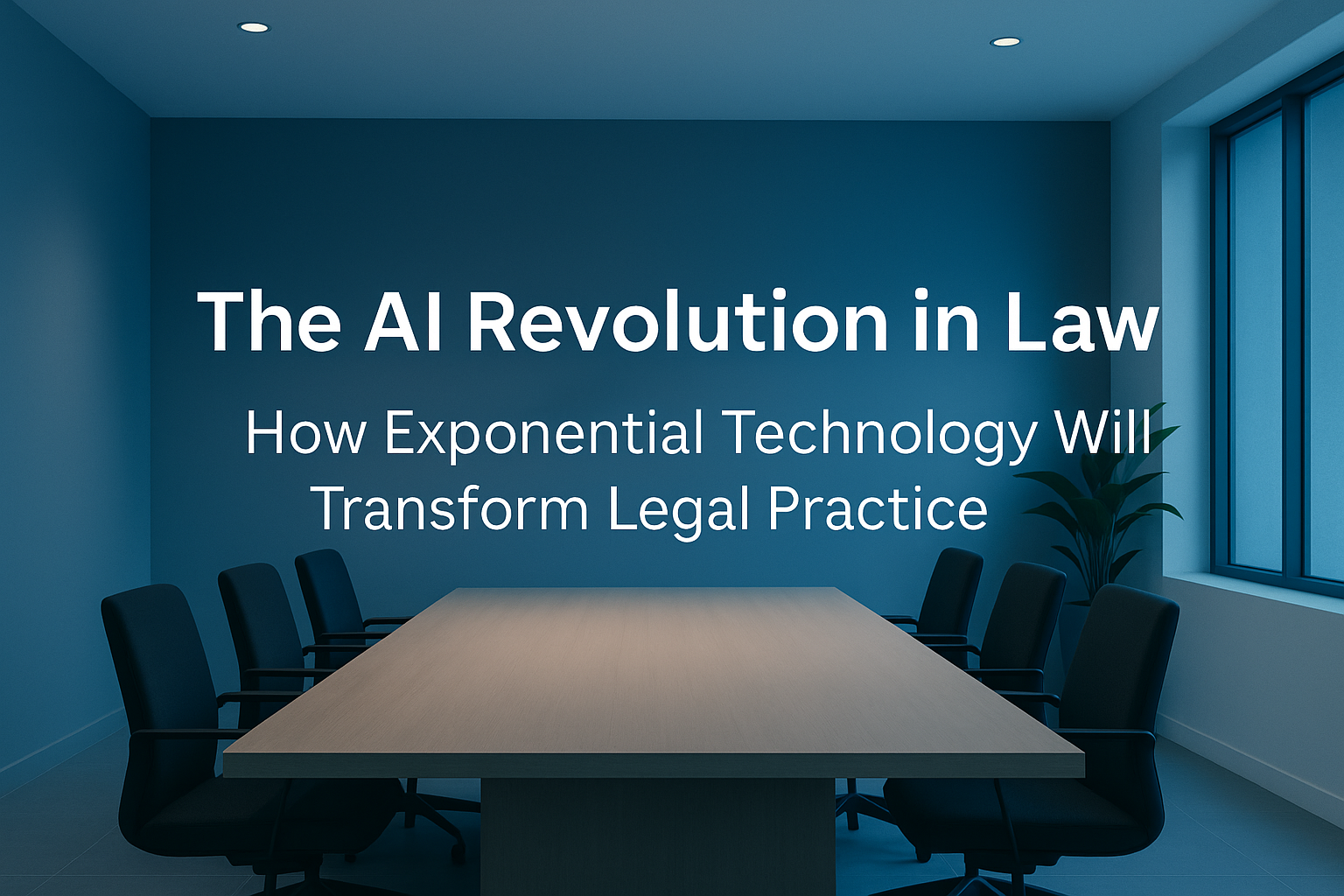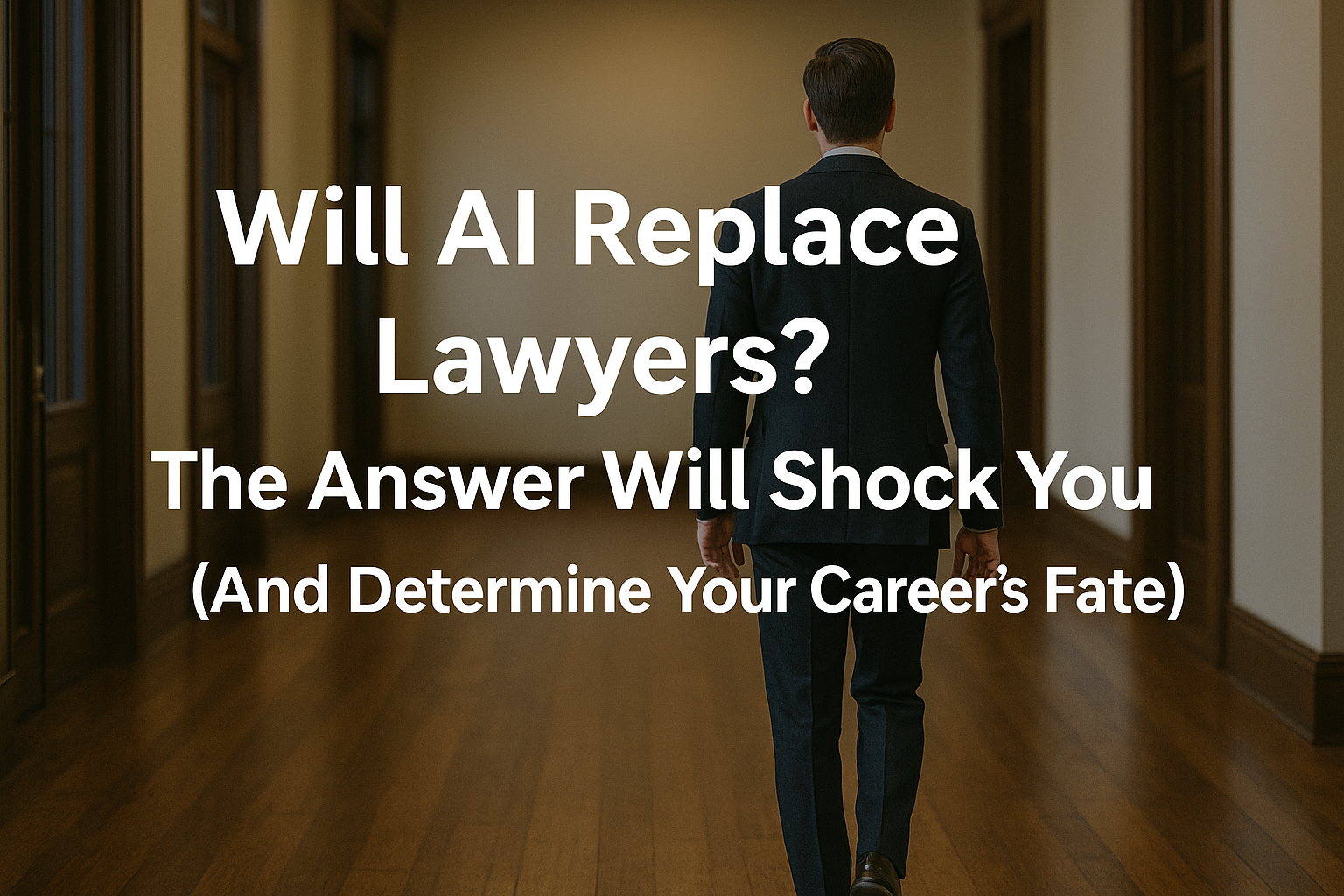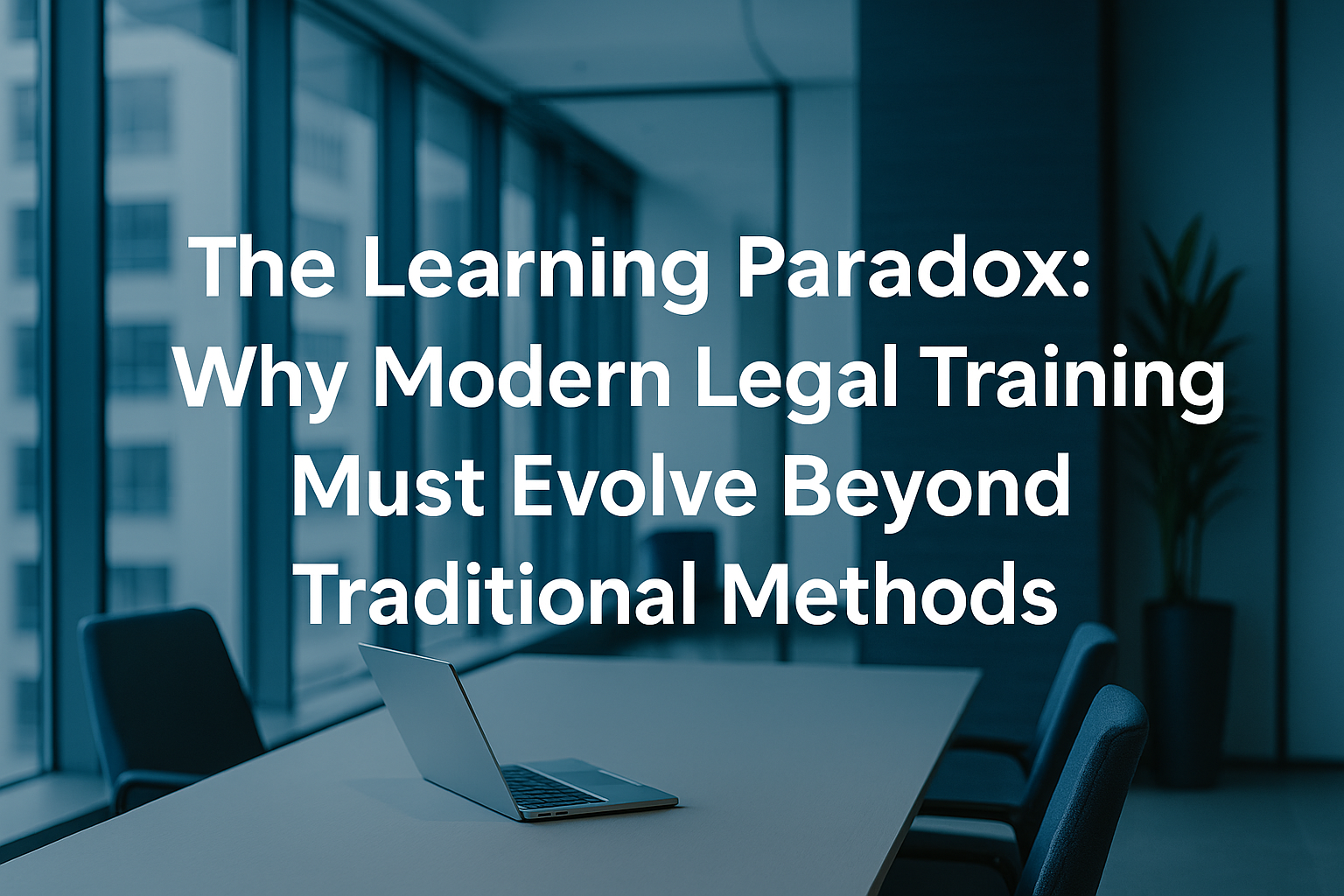
Are you prepared for the seismic shift that AI is bringing to the M&A landscape? Are you really?
The Australian legal sector stands at the brink of a revolution that will reshape its core. Artificial intelligence, once a distant dream, now emerges as a thunderous force in law firms, poised to transform the landscape of mergers and acquisitions.
This blog post prophesies the future, offering a glimpse into an era where AI reigns supreme. Over the next two years, observers will witness unparalleled change as AI becomes the master of the M&A realm.
Prepare for an extraordinary journey ahead, where the impossible becomes possible, and the essence of M&A transactions is redefined by the unstoppable force of artificial intelligence.
The Dawn of a New Era in M&A
The integration of AI in various sectors has been both lauded and debated, but it’s incursion into the legal field, particularly within the ambit of M&A, signals a revolution that could reshape how legal professionals approach, manage, and execute deals.
The purpose of this exploration is not merely to inform but to critically analyse how AI is set to disrupt the traditional methodologies employed in legal practices, focusing specifically on its impact on mergers and acquisitions.
The purpose of this exploration is not merely to inform but to critically analyse how AI is set to disrupt the traditional methodologies employed in legal practices, focusing specifically on its impact on mergers and acquisitions.
Against the backdrop of a rapidly evolving digital landscape, the Australian legal profession stands at a crossroads. The advancements in AI technology have thrown open the doors to possibilities that were once the stuff of science fiction—automating due diligence, predicting legal outcomes, and facilitating more informed decision-making processes.
But what does this mean for today’s legal professionals? How will AI redefine the roles, responsibilities, and strategies of lawyers involved in M&A transactions?
This blog post aims to demystify the role of artificial intelligence in the M&A domain, offering insights into how legal practices can harness the power of AI to not only stay ahead of the curve, but also to deliver unprecedented value in the competitive field of mergers and acquisitions.
Join us as we delve into the current landscape of M&A in Australia, the emerging influence of AI on legal practices, and the challenges and opportunities this technological wave presents.
The Current M&A Landscape in Australia
In understanding the transformative impact AI is poised to have on M&A transactions, it’s pivotal to first grasp the current state of the M&A market in Australia. Recent insights from DLA Piper’s Global M&A Intelligence Report shed light on a landscape that, while navigating through global economic headwinds, reveals a sector that is adapting and evolving in intriguing ways.
The report underscores a nuanced market where, contrary to expectations during slowdowns, buyers aren’t seeing the usual improvement in deal terms. This period of adjustment has seen sellers pivot towards focusing on completion protection measures as the risk of deals falling through increases—a trend highlighted by DLA Piper’s head of corporate, Shane Bilardi.
This shift is indicative of a market that’s becoming increasingly cautious and strategic in its approach to M&A transactions.
A key driving force behind these changes is the complex geopolitical environment leading to tighter foreign investment regimes globally. This has introduced more Foreign Direct Investment (FDI) conditionality into transactions, making FDI approvals a common hurdle for many deals.
Such challenges are reshaping the M&A terrain, urging professionals to navigate these complexities with greater diligence and foresight.
Moreover, an emerging focus on Environmental, Social, and Governance (ESG) considerations is influencing the market. The report highlights how ESG concerns are not only driving deal flow as clients seek to transform their businesses in light of these issues but are also becoming a focal point of due diligence processes.
This emphasis on ESG underscores a broader shift towards responsible investing and sustainable business practices within the M&A domain.
Joel Cox, a corporate partner at DLA Piper, provides further insight into the M&A market’s trajectory, noting a building momentum in local M&A processes and an anticipation of announced deals picking up substantially.
The report draws attention to a considerable dry powder for quality assets and a sustained interest in tech and energy M&A deals, particularly from global institutional investors and US private equity funds. This reflects a market that, while facing challenges, is ripe with opportunities for growth and innovation.
The decline in capital investment in certain sectors, such as Fintech, juxtaposed with an uptick in energy transition-related M&A and investment, illustrates the dynamic shifts occurring within the industry. The market is witnessing a transition towards sectors and deals that align with broader technological advancements and societal shifts, including the pivotal role of artificial intelligence.
All traditional businesses are subject to digital disruption, a phenomenon only accelerated by artificial intelligence and the commitments of corporations and governments towards energy transition.
This is creating a high proportion of M&A activity related to the tech sector, signalling a market that’s not just reacting to current trends but is also anticipating the future landscape of business and investment.
As we delve deeper into the influence of AI on legal M&A practices, it’s essential to keep these current trends and insights in mind. They provide a foundation for understanding how AI can not only fit into but also significantly enhance the M&A process, offering innovative solutions to the challenges and opportunities presented by today’s market dynamics.
AI’s Emerging Influence on Legal M&A Practices
The advent of artificial intelligence in the realm of mergers and acquisitions (M&A) is not merely an incremental change; it represents a paradigm shift in how legal professionals approach, manage, and execute deals.
As we navigate through the current M&A landscape in Australia, marked by increasing complexities and a heightened focus on efficiency and innovation, AI emerges as a pivotal player in reshaping the future of legal practices involved in M&A transactions.
Enhancing Due Diligence
One of the most critical stages in any M&A deal is due diligence—a comprehensive appraisal of a business’s assets and liabilities that informs the negotiation phase. Traditionally, this process has been notoriously time-consuming and resource-intensive, often involving a myriad of legal documents and data points that need to be meticulously reviewed.
Enter AI, with its capability to process vast amounts of information at unprecedented speeds, offering a solution that not only streamlines due diligence but also enhances its accuracy.
AI-powered tools can sift through contracts, financial records, and other pertinent documents in a fraction of the time it would take human lawyers, identifying risks, obligations, and anomalies that might go unnoticed by the human eye.
This level of efficiency and precision in due diligence not only accelerates the M&A process but also provides legal teams and their clients with deeper insights and a more robust foundation for negotiation.
Streamlining Deal Structuring
The structuring of an M&A deal is a complex puzzle, involving various legal, financial, and operational considerations. AI’s ability to analyse patterns and predict outcomes based on historical data can significantly aid in this process.
By leveraging AI, legal professionals can model different deal structures and forecast their potential impact, enabling more informed decision-making.
Moreover, AI can assist in the drafting of legal documents, generating first-draft agreements based on predefined templates and parameters. This not only reduces the manual workload on lawyers but also ensures consistency and compliance across all documentation, minimising the risk of errors and discrepancies.
Risk Assessment and Predictive Analysis
Perhaps one of the most transformative aspects of AI in M&A is its potential for risk assessment and predictive analysis. AI algorithms can evaluate the potential risks associated with a deal, from financial instability and regulatory issues to integration challenges and cultural mismatches.
More importantly, AI can draw on vast datasets to predict the likely success of a merger or acquisition, taking into account not only financial metrics but also softer factors such as company culture and market dynamics.
This predictive capability can be a game-changer for M&A strategy, enabling legal advisors and their clients to make more nuanced and strategic decisions. By understanding the potential risks and rewards of a deal in greater depth, parties can negotiate more effectively, structure deals more intelligently, and ultimately, achieve more successful outcomes.
In integrating AI into M&A practices, legal professionals are not just automating existing processes; they are reimagining what is possible in the world of mergers and acquisitions. The emergence of AI as a tool for enhancing due diligence, streamlining deal structuring, and conducting risk assessment and predictive analysis is just the beginning.
As AI technologies continue to evolve, their potential to revolutionise the M&A landscape grows, offering unprecedented opportunities for innovation, efficiency, and strategic advantage.
Case Studies: AI in Action
To fully grasp the transformative impact of artificial intelligence (AI) in the mergers and acquisitions (M&A) domain, it is insightful to examine real-life scenarios or hypothetical case studies where AI has significantly enhanced the due diligence process and deal optimization.
These examples serve to illustrate the tangible benefits firms can realise by integrating AI tools, such as AI Legal Assistant, into their M&A practices.
Accelerating Due Diligence with AI Legal Assistant
Imagine a scenario where a leading Australian law firm is tasked with conducting due diligence for a complex cross-border acquisition. Traditionally, this would involve weeks, if not months, of manual document review by a team of experienced lawyers.
However, by leveraging AI Legal Assistant, the firm is able to automate the initial stages of document review, extracting key information, identifying potential red flags, and organising data in a fraction of the time.
The AI tool’s capability to process and analyse documents at speed allows the firm to quickly gain a comprehensive understanding of the target company’s legal and financial standing. This not only accelerates the due diligence process but also frees up the legal team to focus on more strategic aspects of the deal, such as negotiation and deal structuring.
The result is a more efficient, accurate, and cost-effective due diligence process, benefiting both the law firm and its client.
Optimising Deal Structuring with Predictive Analytics
Consider another use case where an Australian energy company is exploring a strategic acquisition to bolster its renewable energy capabilities. The complexity of the deal, involving numerous assets, regulatory considerations, and integration challenges, requires a nuanced approach to deal structuring.
By employing AI-driven predictive analytics, the company’s legal advisors can simulate various deal structures and predict their outcomes based on a wealth of historical data.
This AI-enabled approach allows the legal team to identify the most advantageous deal structure, taking into account not only financial implications but also regulatory compliance and integration risks.
The predictive insights provided by AI enable more informed decision-making, ultimately leading to a deal structure that maximises value and minimises risk for the acquiring company.
Enhancing Risk Assessment in High-Stakes Transactions
In a high-stakes M&A transaction involving a leading Australian tech company, the stakes are high, and the margin for error is slim. The complexity of the tech industry, coupled with the rapid pace of innovation, makes risk assessment a critical component of the M&A process.
By harnessing AI for a comprehensive risk analysis, the company’s legal team can go beyond traditional financial and operational risk assessments to include potential technological, regulatory, and market risks.
AI’s ability to analyse vast datasets and identify patterns and trends enables a more holistic risk assessment, uncovering potential issues that may not be evident through traditional analysis methods. This deep-dive into risk factors empowers the legal team and their client to make strategic decisions, mitigate potential risks, and navigate the M&A transaction with greater confidence.
These case studies underscore the significant advantages that AI brings to the M&A process, from accelerating due diligence and optimising deal structuring to conducting in-depth risk assessments.
As AI technologies continue to evolve and mature, their role in reshaping the M&A landscape is set to expand, offering legal professionals innovative tools to navigate the complexities of modern M&A transactions with greater efficiency, accuracy, and strategic insight.
Challenges and Opportunities
The integration of artificial intelligence (AI) into the mergers and acquisitions (M&A) process presents a complex landscape of challenges and opportunities for legal professionals. While the potential benefits are significant, navigating the path towards effective AI adoption requires addressing several key considerations.
Navigating the Technical Landscape
One of the primary challenges is the technical complexity of AI itself. Legal firms must not only invest in the right AI technologies but also ensure their teams are adequately trained to use these tools effectively. This involves a steep learning curve and a shift away from traditional ways of working. The initial costs of technology acquisition and workforce training can be substantial, posing a barrier to entry for smaller firms or those with limited resources.
Additionally, integrating AI into existing legal workflows can be a complex process, requiring careful planning and execution to ensure compatibility with current systems and processes. Concerns about data security, particularly when handling sensitive client information, add another layer of complexity to AI adoption.
However, with “AI Legal Assistant,” we’ve addressed these challenges head-on. Our solution features a very short learning curve and is user-friendly, making it accessible even for those who are not tech-savvy. We have lawyers aged 65 and older using it with ease, demonstrating that our AI is accessible and practical for all members of a legal team, regardless of their technological proficiency.
We back this up with thorough training, so practitioners can hit the ground running and see significant productivity gains from the first week of using our AI for lawyers.
Ethical and Regulatory Considerations
The use of AI in legal practices also raises important ethical and regulatory questions. Decisions made during the M&A process can have far-reaching consequences, and the delegation of certain tasks to AI could lead to accountability issues.
There is a need for clear guidelines on how AI can be used responsibly in legal contexts, ensuring transparency, fairness, and compliance with existing laws and regulations.
The evolving regulatory landscape further complicates matters, as legal professionals must stay abreast of new developments and understand how they affect the use of AI in M&A transactions. Balancing innovation with compliance requires a proactive approach to regulatory engagement and a deep understanding of the ethical implications of AI.
Opportunities for Innovation and Competitive Advantage
Despite these challenges, the opportunities presented by AI in the M&A domain are immense. For legal professionals willing to navigate the complexities of AI adoption, the potential for innovation and competitive advantage is significant.
AI offers the promise of enhanced efficiency and accuracy in due diligence, deal structuring, and risk assessment, enabling legal teams to provide higher-value services to their clients.
By automating routine tasks, AI frees up legal professionals to focus on strategic aspects of M&A transactions, such as negotiation and client advisory roles. This shift towards higher-value work can improve client satisfaction and potentially lead to new business opportunities.
Moreover, AI’s predictive capabilities provide legal professionals with powerful tools for strategic decision-making. By leveraging AI for predictive analysis, legal teams can gain deeper insights into the potential risks and rewards of M&A transactions, informing more nuanced and strategic advice to clients.
The ability to harness AI for innovation in legal services also positions firms as leaders in the field, attracting clients and talent seeking to engage with cutting-edge legal practices. As the legal industry continues to evolve, firms adept at integrating AI into their M&A processes will be well-placed to lead the market and shape the future of legal services.
In conclusion, while the path towards effective AI integration in M&A is fraught with challenges, the opportunities it presents for legal professionals are profound.
By addressing technical, ethical, and regulatory considerations head-on, legal firms can harness the power of AI to revolutionise their M&A practices, delivering enhanced value to clients and securing a competitive edge in the rapidly evolving legal landscape.
Preparing for the AI Revolution
As the legal industry braces for the transformative impact of artificial intelligence (AI) on mergers and acquisitions (M&A), legal professionals must take proactive steps to ensure they are well-prepared for this inevitable shift.
The journey towards AI integration involves not just technological adoption but also a cultural shift within organisations. Here are actionable strategies for legal firms and professionals to effectively integrate AI into their M&A practices.
Embrace Continuous Learning and Development
The dynamic nature of AI technology requires legal professionals to adopt a mindset of continuous learning. Engaging in professional development opportunities related to AI and technology-driven legal processes is crucial. This could involve attending workshops, seminars, and courses focused on AI applications in law.
Fostering an environment that encourages curiosity and ongoing education will be key in adapting to the AI-driven future of M&A.
Partner with Technology Providers
Forging partnerships with AI technology providers can offer legal firms a competitive edge. These collaborations can provide access to cutting-edge tools, bespoke solutions tailored to specific M&A needs, and insights into best practices for AI integration.
By working closely with tech companies, legal professionals can also influence the development of AI tools to better meet the unique challenges of legal work.
Adopt a Forward-Thinking Mindset
The legal profession is traditionally seen as conservative and resistant to change. However, the successful integration of AI into M&A practices requires a forward-thinking mindset that embraces innovation and change. Legal firms should foster a culture that encourages experimentation, innovation, and the adoption of new technologies.
This cultural shift can empower legal teams to explore AI’s potential and integrate it into their workflows more seamlessly.
Invest in Technology and Training
Investing in the right AI technologies and training is essential for harnessing AI’s full potential. This includes not only purchasing AI software and tools but also investing in the training required for legal professionals to use these technologies effectively.
Making informed decisions about technology investments, based on thorough research and trials, will ensure that firms choose solutions that align with their specific needs and goals.
Understand AI’s Capabilities and Limitations
To leverage AI effectively, legal professionals must have a clear understanding of what AI can and cannot do. This involves recognising the strengths of AI in processing vast amounts of data and identifying patterns, as well as its limitations in handling tasks that require human judgement, empathy, and ethical considerations.
A balanced view of AI’s capabilities will enable legal professionals to deploy AI tools in ways that complement their skills and expertise.
Prepare for Ethical and Regulatory Compliance
Navigating the ethical and regulatory landscape is a critical aspect of AI integration. Legal firms should proactively engage with ethical guidelines and regulatory requirements related to AI use in legal practices.
Developing internal policies and protocols for AI use can help ensure compliance and address ethical concerns, safeguarding both the firm and its clients.
By embracing these strategies, legal professionals can not only prepare for the AI revolution in M&A but also position themselves at the forefront of innovation in the legal industry. The journey towards AI integration offers an opportunity to redefine the value that legal services provide in the M&A domain, enhancing efficiency, accuracy, and strategic insight.
As the legal landscape evolves, those who proactively adapt to and embrace AI will lead the way in delivering superior client outcomes and shaping the future of legal practice.
The Road Ahead: M&A in Australia Beyond 2024
As we look towards the future of M&A in Australia, it’s clear that artificial intelligence (AI) will play a pivotal role in shaping the landscape. The integration of AI into legal practices, especially within the M&A domain, is set to redefine traditional processes, presenting a future where legal professionals operate with unprecedented efficiency and strategic insight.
The road ahead promises a blend of challenges and opportunities as the legal industry adapts to this new paradigm.
A Future Defined by Technological Innovation
The continued advancement of AI technologies is expected to further enhance the capabilities of legal professionals in conducting M&A transactions.
From more sophisticated due diligence tools that can predict potential deal risks with greater accuracy to AI-driven analytics offering deeper insights into market trends, the technological innovations on the horizon will empower legal professionals to deliver even more value to their clients.
The Evolving Role of Legal Professionals
As AI takes on more of the routine tasks involved in M&A transactions, the role of legal professionals is poised to evolve. Lawyers will increasingly focus on higher-value aspects of deals, such as strategy development, negotiation, and client advisory.
This shift will not diminish the importance of legal expertise; rather, it will elevate the role of legal professionals to that of strategic advisors who leverage AI to inform their insights and recommendations.
New Frontiers in Legal Services
The integration of AI is expected to open up new frontiers in legal services, enabling firms to offer innovative solutions that go beyond traditional M&A advisory. For instance, AI-powered platforms could facilitate more efficient deal matchmaking, connecting buyers and sellers based on complex criteria and predictive success factors.
Legal firms may also expand their services to include AI-driven market analysis and strategic growth planning, offering clients a more holistic suite of services.
Navigating Regulatory and Ethical Considerations
As the use of AI in M&A transactions becomes more prevalent, regulatory and ethical considerations will come to the forefront. Legal professionals and regulatory bodies will need to collaborate closely to establish clear guidelines and standards for AI use, ensuring that it enhances the M&A process without compromising ethical principles or client confidentiality.
This collaborative approach will be crucial in fostering trust and confidence in AI-driven legal services.
The Importance of Adaptability and Innovation
To thrive in the AI-driven future of M&A, legal professionals will need to embrace adaptability and innovation. Staying abreast of technological developments, continually refining AI strategies, and fostering a culture of continuous learning will be key to success.
Those who view AI as a partner in the M&A process, rather than a threat, will be best positioned to leverage its full potential.
Embracing the Inevitable Change
As we stand on the cusp of a new era in M&A, driven by the transformative power of AI, it’s clear that change is not just coming—it’s already here. The integration of AI into legal practices offers the promise of a more efficient, strategic, and insightful approach to M&A transactions.
For legal professionals willing to embrace this change, the future holds exciting possibilities for innovation, growth, and competitive advantage.
The journey ahead will require a keen understanding of AI’s capabilities, a commitment to ethical and regulatory compliance, and a willingness to rethink traditional roles and processes.
By navigating these challenges with foresight and agility, the Australian legal industry can look forward to a future where AI not only enhances the M&A process but also redefines the value and impact of legal services in the business world.
As we contemplate the road ahead, let’s engage in a dialogue about how we can proactively adapt to and embrace the AI-driven transformation in the legal M&A landscape.
How do you envision the future of M&A in Australia with the integration of AI?
What steps is your firm taking to prepare for this inevitable change?
Share your thoughts and experiences, and let’s explore the possibilities together.












